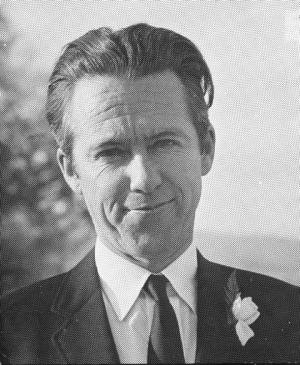Thomas Riha spent the night of March 15, 1969 attending dinner party at a graduate student’s Boulder home. The University of Colorado professor appeared distracted and nervous that Friday night, but he was a quiet man by nature and his private life had been particularly chaotic as of late. No one was particularly worried by the Czech native’s unwillingness to discuss whatever was troubling him, nor did anyone object when the professor said his goodbyes and departed in his ’67 Volkswagen at 12:30 AM.

This was the last time Thomas Riha was seen alive—or dead, for that matter. 48 years later, neither Riha nor his remains have ever been found.
No one at that dinner party could have fathomed just how far-reaching the consequences of Thomas Riha’s disappearance would ultimately be. The case would cause an extended break in communications between the FBI and CIA at the direct request of J Edgar Hoover.
Rumors of espionage, Communist defection, and even assassination swirled in the informational void. The name “Thomas Riha” would be mentioned more than once in the Senate’s 1975 Church Committee hearings.
An enigmatic woman called “The Colonel“ would also be tied to the disappearance. She self-identified as Tom Riha’s confidante, and days after Riha’s last confirmed sighting, she claimed to be his widow.

Gloria “Galya” Tannenbaum claimed to be a Colonel in the U.S. Army Intelligence with friends in high places. She claimed to be a lot of things: a geologist, a textbook editor, a tightrope walker, an inventor, an advertising executive, a law student, an English professor.
She claimed to be a war hero, a concentration camp survivor and a one-time guinea pig of Joseph Mengele. She said she was an INS official, a CIA operative, a Russian operative, a double agent, and even a killer. In fact, the Colonel would claim dozens of identities in her forty years.
But what didn’t factor into her Very Important personas was the grim reality of Galya Tannenbaum’s circumstances: she was a high school drop-out, a con artist, and a thief. She had a string of failed relationships and multiple convictions to her name—her first brush with the law stemmed from an attempt to embezzle her then-husband’s paycheck, which also marked the end of her first marriage.
Her abusive upbringing would manifest in a diagnosis of a “depressive, neurotic, and anti-social personality.” Psychiatrists, at some point, described Tannenbaum as “sociopathic through her rearing and by what happened to her when she was young.” She later admitted to lying to psychiatrists to make herself sound more interesting.
There may, however, be some veracity to the darkest of Tannenbaum’s claims: was she really a killer? That’s what she told Zdenek Cerveny—Thomas Riha’s nephew who eventually sued the CIA on allegations of withholding information about Riha. She had shown Cerveny the gun she carried in her purse, too.
In fact, by the time of her January 20, 1970 interrogation on the Riha case, Tannenbaum was suspected to be involved in two of her friends’ mysterious suicides in 1969: the body of 78-year-old Gus Ingwerson was found in his Denver apartment on June 18,[2] and a will naming Tannenbaum as his estate’s principal beneficiary was filed on June 19. When, three months later, 51-year-old Margaret Egbert was found dead in her Denver apartment, she used her suicide note to call the Denver D.A. a fraud, but her car would later be found parked in front of Tannenbaum’s daughter’s home.
Both deaths were attributed to potassium cyanide.
And then on March 7, 1971—after being deemed incompetent to stand trial for forgery related to Riha’s disappearance—The Colonel herself would commit suicide while in custody at a Pueblo State Hospital. The cause of death? Potassium cyanide.
The story of Thomas Riha hits on so many true crime tropes that it’s almost unbelievable. I mean, really: how often is the CIA really involved in a missing persons case? How often is it actually plausible that The Other Woman is maybe, possibly a serial poisoner? The details of this murky narrative are just red herring after red herring.
I have researched this case off-on-on for the last two years, and yet it seems I discover something new everyday. Only now, after studying the Cold War, espionage, and intelligence agency overreach do I feel I can do this case something close to justice.
But, the complexity necessitates that the story of Thomas Riha be told in four parts:
- In Part I, we will explore Riha’s early life in Czechoslovakia, his years in the United States, the circumstances preceding his disappearance, and the disappearance itself.
- In Part II, we will explore the life and lies of Galya Tannenbaum, including the nature of the relationship she claimed to share with Riha, as well as her version of events.
- In Part III, we will explore the local, state, and federal investigations into Riha’s disappearance.
- In Part IV, we will examine the veracity of popular theories of what happened to Riha, and I will finally disclose what I believe happened to Riha that night.
I’m Galya’s son.. Your blog post is interesting.
I was Tom Riha’s TA at the time of his disappearance. Where can I read what’s mentioned above?